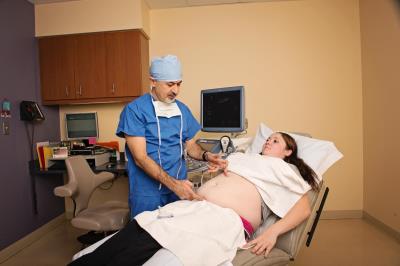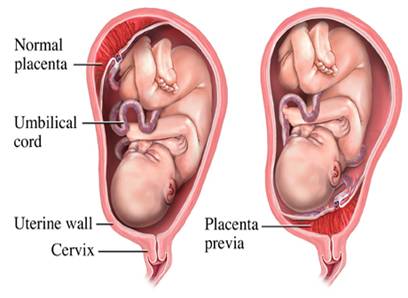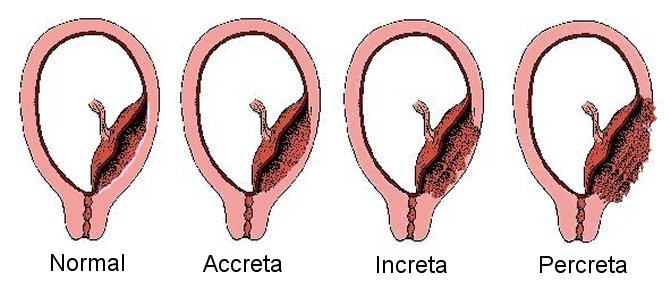Complex Obstetric Surgery

Ozhan Turan, MD, PhD, FACOG, Director of Complex Obstetric Surgery
The number of pregnant women who require challenging surgeries during pregnancy is increasing. Recognition of such patients reduces the risk of morbidity and mortality. The term Complex Obstetric Surgery (COS) implies all surgeries carry more than typical risk for maternal and fetal morbidity such as:
- Placental implantation abnormalities
- Placental previa
- Placenta accreta, increta, percreta
- Extreme morbid obesity (BMI>50 or maternal weight >350 lb)
- History of multiple (>4) previous c-section
- History of complicated previous abdominal surgery (previous bowel surgery, kidney transplant, hernia repair with mesh, etc.)
- EXIT (Ex Utero Intrapartum Treatment) procedure
- Abdominal cerclage
COS Program
The COS program will focus on identifying the patients for high risk, providing expert multi-disciplinary treatment modalities, and follow-up of those conditions, including formal research protocols, peer and public education, sophisticate post-graduate training.
Employing uniquely experienced obstetric and gynecologic surgeons as well as anesthesiologists, radiologists, and blood transfusion specialists the team is well equipped to handle the most difficult aspects of surgical care for abnormal placenta to ensure optimal outcomes for mothers. As always, the highly skilled and experienced Neonatology team is working alongside to provide top level care for the newly born infant as well.
One unique approach to treatment of abnormal placenta performed at UMMC is careful selection of cases for two step treatment, where the cesarean delivery is performed and then the mother is allowed several weeks to recover before undergoing a scheduled hysterectomy. The aim is reducing the blood loss and surgical complications that may occur if hysterectomy is performed immediately following delivery. This approach is not appropriate for all cases, but our Complex Obstetric Surgery program is the best trained team in the region to make this a possibility.
Placenta Previa
 When a pregnancy first begins the early pregnancy tissue will attach inside the mother’s womb. The location where it attaches is not the same in all women. The early tissue of the pregnancy will become two organs: the placenta and the baby. The placenta is a collection of tissue and blood vessels the job of which is to provide the baby with nourishment. The location of the placenta can be determined using ultrasound examination. If the placenta grows near, or over, the opening of the birth canal this is called PLACENTA PREVIA. As pregnancy continues and the baby and uterus grow it is possible in some cases that the placenta previa can stretch away from the opening, but this does not always happen. Several ultrasounds of the pregnancy are performed as the pregnancy continues to monitor the location of the placenta. Placenta previa occurs in approximately 1 in every 200 pregnancies. The risk for placenta previa is increased in patients who have had previous cesarean deliveries, previous pregnancies with placenta previa, and in patients who smoke.
When a pregnancy first begins the early pregnancy tissue will attach inside the mother’s womb. The location where it attaches is not the same in all women. The early tissue of the pregnancy will become two organs: the placenta and the baby. The placenta is a collection of tissue and blood vessels the job of which is to provide the baby with nourishment. The location of the placenta can be determined using ultrasound examination. If the placenta grows near, or over, the opening of the birth canal this is called PLACENTA PREVIA. As pregnancy continues and the baby and uterus grow it is possible in some cases that the placenta previa can stretch away from the opening, but this does not always happen. Several ultrasounds of the pregnancy are performed as the pregnancy continues to monitor the location of the placenta. Placenta previa occurs in approximately 1 in every 200 pregnancies. The risk for placenta previa is increased in patients who have had previous cesarean deliveries, previous pregnancies with placenta previa, and in patients who smoke.
If the placenta previa persists then the pregnancy may be at risk for unexpected vaginal bleeding. This bleeding may be caused by outside disruption (e.g. douching, sexual intercourse), and for this reason we recommend patients with placenta previa to avoid these activities. Bleeding may also occur because of early uterine contractions. If a patient with placenta previa experiences vaginal bleeding at any time she should contact her obstetric provider immediately.
For the safety of the baby and the mother, the best method of delivery is cesarean delivery. This is because labor can cause significant bleeding that would be dangerous to the mother and the baby. For this reason, cesarean delivery is usually scheduled at approximately 36 weeks.
Placenta Accreta/Increta/Percreta
When a pregnancy first begins the early pregnancy tissue will attach inside the mother's womb. The early tissue of the pregnancy will become two organs: the placenta and the baby. The placenta is a collection of tissue and blood vessels the job of which is to provide the baby with nourishment. Normally as the placenta grows early in pregnancy it attaches gently to the inside wall of the uterus to connect the baby and the mothers blood flow. In some pregnancies the placenta does NOT grow normally and attaches more firmly to the uterus. When the placenta attaches firmly underneath the surface of the uterus this is called PLACENTA ACCRETA. When the placenta attaches deeper into the muscle of the uterus this is called PLACENTA INCRETA. When the placenta grows completely through the uterus this is call PLACENTA PERCRETA. In some cases of placenta percreta the placenta can grow into surrounding body parts such as the bladder or bowels.

These types of abnormal placenta occur in approximately 1 in 500 pregnancies. Mothers are at higher risk for abnormal placenta if they have had cesarean deliveries in earlier pregnancies, had prior surgery on the uterus (e.g. D&C or fibroid removal), are older than 35 years, or have multiple gestation (e.g. twins, triplets).
The diagnosis for abnormal placenta is usually made during ultrasound examination. During some pregnancies where abnormal placenta is suspected, an MRI examination is performed to look more closely at the depth of growth. MRI is safe for mothers and babies during pregnancy. Rarely, the diagnosis of abnormal placenta is made at the time of delivery.
Once diagnosed, unfortunately there are no medications or surgeries to fix abnormal placenta prior to delivery. The safest route of delivery with abnormal placenta is cesarean delivery because natural labor can cause significant bleeding that can be dangerous, sometimes life-threatening, to mother and baby. For this reason, delivery is typically scheduled for the 36th week of pregnancy; though delivery may occur earlier if needed. After delivery of the baby a thorough inspection of the placenta inside the uterus is performed. In many pregnancies with abnormal placenta once the baby is delivered safely the uterus is removed surgically (a "hysterectomy") with the placenta attached in order to prevent severe bleeding.
Patient Stories
- Read Brandy Firth's story of being diagnosed with the potentially life-threatening condition placenta accreta, and about the treatment she received at UMMC.
- Read more about UMMC's program in the article, "Complex Obstetric Surgery Program Handles the Most Challenging Surgical Cases."
For more information about the Complex Obstetric Surgery program, please call 410-328-3865.
Center for Advanced Fetal Care: 410-328-3865.Express Care: 410-328-1411
